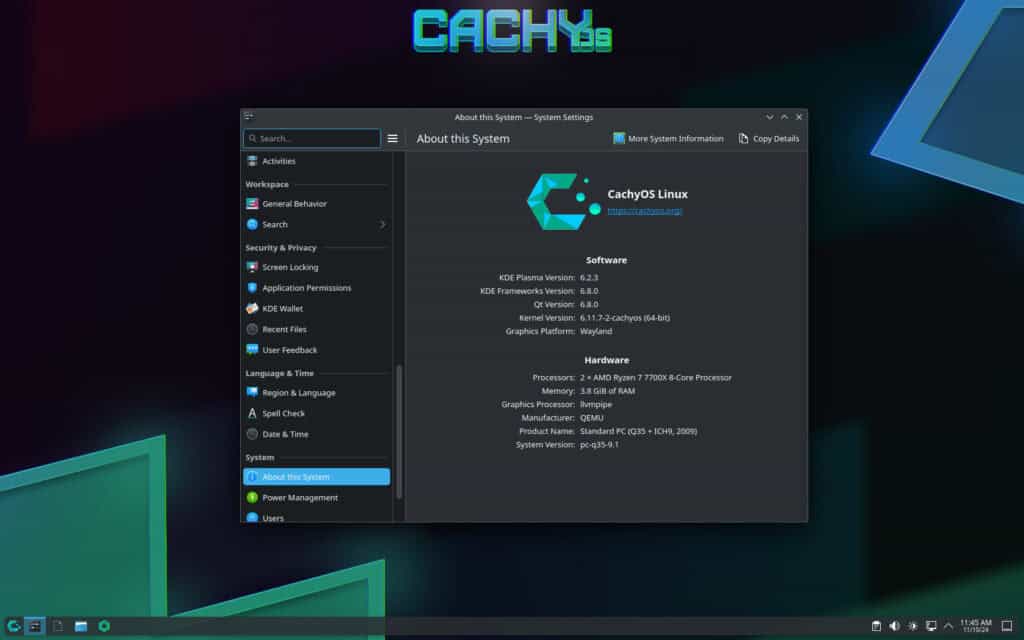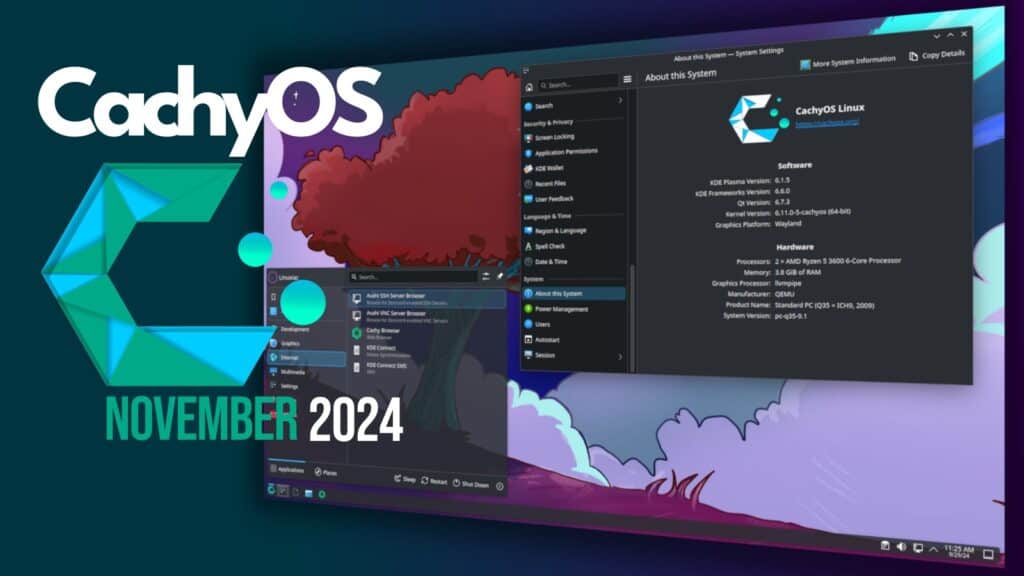Over a month after its previous October release, the Arch-based and gamers-focused CachyOS has rolled out its 11th (November) update, bringing performance improvements, enhanced hardware support, and feature updates.
We’ll start by saying that it now has a backported THP Shrinker from the upcoming Linux kernel 6.13, which allows hugepages to be split earlier, reducing memory usage when “transparent_hugepages” is set to “always” while preserving performance.
Additionally, the devs added the AMD Cache Optimizer, which lets users modify the preferred mode between cache and frequency at runtime—ideal for gamers needing a specific core ranking. Strix Point owners will be pleased to hear about backported AMD-pstate performance fixes, which should noticeably enhance the performance of these systems.
For users with NVIDIA cards, the GSP Firmware will now be automatically disabled if they switch to the closed-source NVIDIA module, which addresses frequent issues experienced by users. The nvidia-powerd service is also enabled by default for supported laptop cards, ensuring optimal performance.
For gaming enthusiasts, the “proton-cachyos” package now includes backported “Optical-Flow” patches, making NVIDIA GPUs compatible with DLSS Frame Generation, significantly improving gameplay fluidity.

The optimized Cachy’s kernel update addresses several long-standing issues, including the incorrect TDP on AMD RDNA3 GPUs—a problem that has persisted for some time but now appears fully resolved. Additionally, timing issues on displays with 5120x1440x240 configurations have been patched, improving overall display performance.
Some important quality-of-life changes have also been introduced regarding ISO usage. For example, users running outdated ISOs will now be notified to ensure they are using the latest version and avoid potential issues.
Additionally, users who attempt to install the “CachyOS Handheld Edition” on unsupported devices will receive a warning, as this version is optimized for handheld systems only.
Due to popular demand, “KDE plasma-addons” have been added to the Plasma installation to delight KDE users. The rEFInd boot manager’s “3-way” partitioning layout has also been reverted to the standard location to support all filesystems properly.
For new users or those opting for a fresh installation, the Calamares installer has received multiple fixes and is now updated to its latest version for smoother installation experiences.
Last, but not least, it’s worth noting that users with laptops featuring an NVIDIA dGPU (30xx series and above) should enable the “nvidia-powerd” service manually by running:
sudo systemctl enable nvidia-powerdCode language: Bash (bash)Of course, thanks to its rolling nature, the current CachyOS users just need to execute the well-known sudo pacman -Syu command to upgrade to the latest.
The announcement provides a complete list of changes. For users eager to try out the latest capabilities, the updated ISO files are available for download via CachyOS’s SourceForge mirrors for those opting for a fresh install.
